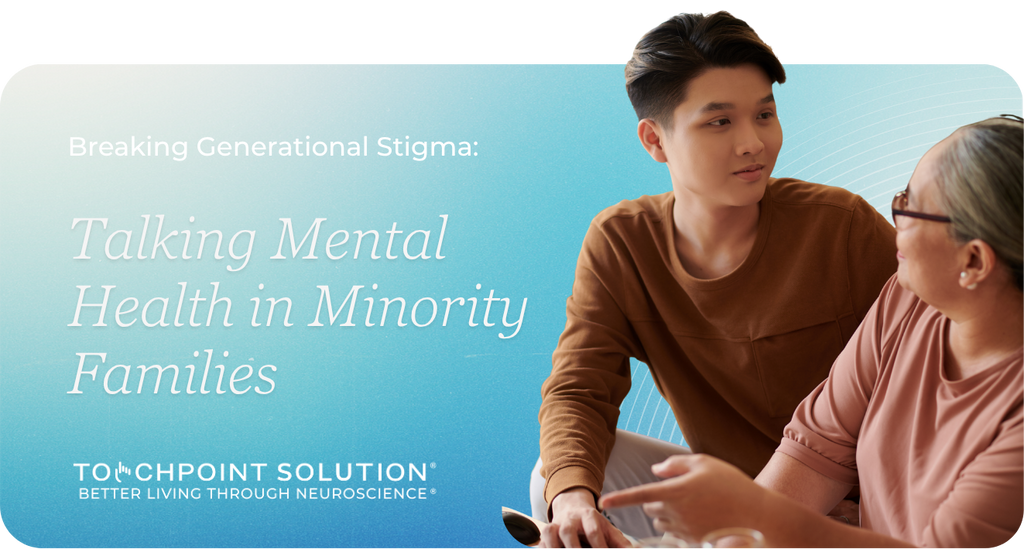Breaking Generational Stigma: Talking Mental Health in Minority Families

For many of us, the first lessons about mental health come from home. If you grew up hearing, “We don’t air our dirty laundry” or “Toughen up and move on,” you’re not alone. Generations of cultural beliefs, survival instincts, and limited access to care have taught countless minority families to protect rather than share their emotions. But the cost of silence can be heavy—anxiety that never gets named, sadness that’s brushed off, stress that settles into the body.
A 2024 Robert Wood Johnson Health brief notes that cultural stigma keeps many people of color from seeking help until a crisis hits, leading to higher rates of untreated anxiety and depression (RWJ Barnabas Health). Another recent mixed-methods study on parent-adolescent communication found that nearly 70 percent of minority parents worry they’ll “say the wrong thing” about mental health but still want better tools to talk with their kids (Science Direct). The good news is that open, supportive conversations can start right where you are.
Breaking the Cycle Matters
- Emotional Health: Unspoken stress often manifests as irritability, sleep disturbances, or chronic tension.
- Relationship Health: Families that talk openly about feelings build stronger trust and empathy.
- Future Generations: Young people who see adults model vulnerability are more likely to seek help early.
Practical Ways to Open the Conversation
- Start Small and Specific. Swap “How was your day?” for “What was the toughest part of today?” Specific questions invite honest answers.
- Share, Don’t Lecture. Telling a personal story (“I felt anxious before my dentist visit, here’s what helped…”) normalizes emotion better than explaining why someone else shouldn’t be anxious.
- Use Body-First Tools to Lower Tension. Stress can hijack the nervous system before words even form. TouchPoints wearables utilize gentle, bilateral micro-vibrations that calm the body’s stress response in approximately 30 seconds, helping conversation partners stay present and regulated rather than slipping into fight-or-flight mode. Clip them on during a family check-in or keep them handy before a tough talk.
- Create a Family Help Map. List out who—and what—feels safe: a school counselor, a trusted aunt, an employee-assistance hotline, a local therapist directory. Seeing options on paper reduces the fear of “now what?” when someone opens up.
- Healthy Relationships: Honest dialogue deepens family bonds.
- Healthy Thinking: Reframes mental health from weakness to wellness.
- Mindfulness: TouchPoints help you notice and soothe stress signals in real-time.
- Sleep: Lower evening tension means better rest for everyone.
You Deserve Calm, Connection & Clarity
Breaking generational stigma isn’t about blaming the past—it’s about giving your family new choices today. Whether you’re a parent starting the conversation, a first-responder looking for calm after a shift, or a college student encouraging your elders to open up, support is within reach.
Ready to bring more ease into family conversations?
Explore TouchPoints and see how wearable stress-relief technology can help every generation stay grounded, present, and heard.
-
Posted in
Healthy Relationships, Minority Mental Health, Stress




